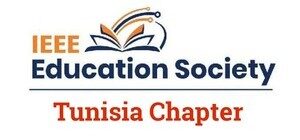Real-time collaborative e-Learning Teams
On Jan, 29th 2022
WIMTA’34: Technical research workshop on new trends in education engineering.
Speaker: Malak Chniter, PhD Student, MIRACL Lab, University of Sfax, Tunisia
Email: [email protected]
Clustering or cluster analysis is the task of analyzing, categorizing and grouping data into a meaningful groups according to their similarities/dissimilarities measures. In the context of building best collaborative learning system, clustering/grouping students’ is an essential clustering task to impact learning in a positive way.
However, with the quickly evolution of students’ data and their different settings, the grouping task becomes more harder and time-consuming. Then, the traditional clustering algorithms are not suffcient to cope with large amount of data. They require much more power to cope with the increase of the data and acheive good clustering accuracy in reasonable time.
Recently, clustering based on the collective behaviour of ants are most promising and they showed high clustering performance. Nonetheless, these algorithms are not able to deal with huge amount of data if they are not implemented in parallel. So, parallelization and multiagent approach are recognized solutions to improve system performances, especially in a real-time collaborative learning context.

